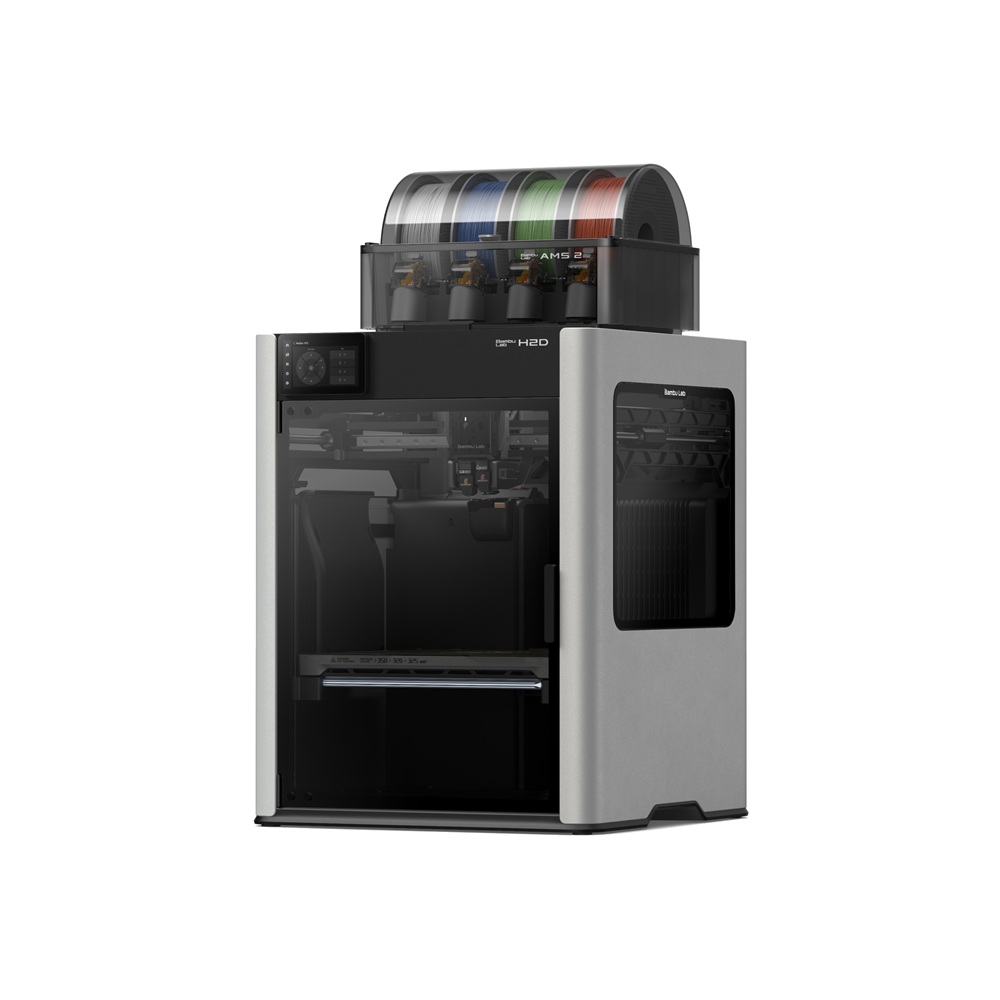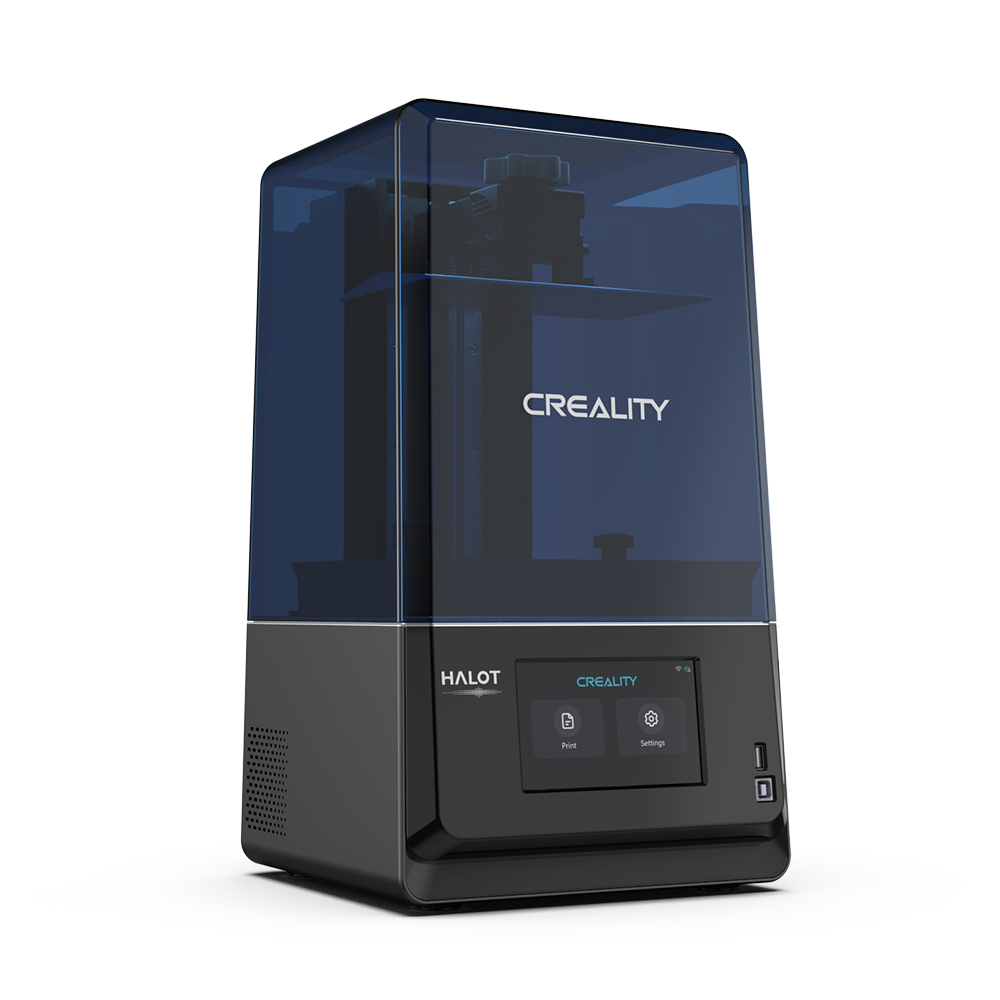Compare H2D vs Halot One Plus
Comparison between the best 3D printers
Choose the best 3D printer at the best price. The cheapest 3D printers are here.
Buy a 3D printer here with 3D Fila.
 |
 |
|
| Model | H2D |
Halot One Plus[BUY Halot One Plus] |
| Printing Material | Filament | Resin |
| Buy Filament for Bambu Lab H2D | Buy Resin forCreality 3D Halot One Plus | |
| Estimated price | $1899,00 | $399,00 |
| Manufacturer | Bambu Lab | Creality 3D |
| Release Year | 2025 | 2022 |
| Print Volume [mm] | 350x320x325 | 102x172x160 |
| Printer Size [mm] | 492x514x626 | 236x245x416 |
| Weight [kg] | 42,3 | 6,8 |
| Power Loss Recovery | YES | NO |
| Maximum Resolution [mm] | 0,01 | |
| Processor | ||
| Display | Touchscreen 5'' | |
| Power Supply | ||
| Connectivity | Wifi, Bambu bus, Cartão SD | USB / Wi-Fi |
| Operating systems | Windows, Mac, Linux | |
| Date of registration in the system | 2025-03-31 | 2022-10-11 |
| Release date | 2025 | 2022 |
| Extra features | Bambu Labs H2D combines high-speed 3D printing with a chamber heated up to 65 °C, dual extrusion with automatic nozzle switching, an AMS for filament drying and exchange, and AI sensors that detect failures. It offers optional laser and digital cutting capabilities, features intelligent calibration through computer vision, vibration control, enhanced fire safety, and real-time camera monitoring. | Crealitys Halot-One Plus printer stands out for its 4K+ resolution that delivers sharp details and consistent surfaces. It features a fast and responsive 5-inch LCD interface, as well as easy-to-use Halot Box software. It offers Wi-Fi connectivity and remote print monitoring, as well as an integrated air filtration unit, a rare feature in this price range. The Halot-One Plus is designed for the prosumer market, combining high quality with advanced features such as Wi-Fi and air filtration. During testing, it stood out for implementing these features at an affordable cost, while maintaining functionality. It features an attractive design with a UV-resistant blue cover and a robust dual rail system for the Z-axis, ensuring smooth and consistent movements. The large LCD and high resolution of the LCD mask (4320 x 2560) are other strong points, allowing for fine details and textures in prints. |
| Support for multiple colors and materials (AMS and CFS) | YES | NO |
Notes * |
||
| Cost-benefit | 7 / 10 | 8 / 10 |
| Hardware | 8 / 10 | 1.4 / 10 |
| Tela | . | . |
| Print volume | 4 / 10 | 3 / 10 |
| Performance | 5 / 10 | 9 / 10 |
| [BUY Halot One Plus] |
Conclusion |
| In comparing the Bambu Lab H2D and the Creality 3D Halot One Plus, several key factors emerge that can guide potential buyers in choosing the right 3D printer for their needs. **Price:** The H2D, while significantly more expensive, offers advanced features and capabilities that cater to professional users. In contrast, the Halot One Plus is very budget-friendly, making it an attractive option for hobbyists and prosumers who may not require the extensive functionalities of higher-end models. **Printing Technology:** The H2D uses filament, while the Halot One Plus utilizes resin. This distinction influences the type of projects each printer is best suited for; filament printers are typically versatile and better for larger prints, whereas resin printers excel in producing high-detail models. **Print Volume and Scale:** The H2D’s larger print volume allows for more substantial print jobs, making it suitable for industrial applications or larger-scale projects. Conversely, the Halot One Plus has a smaller print area which is more aligned with detailed, smaller prototypes or intricate designs. **Features and Usability:** The H2D boasts high-tech features such as dual extrusion, power loss recovery, and AI sensors, which facilitate advanced projects and minimize the chance of print failure. The Halot One Plus, while lacking some of these high-end features, offers excellent print resolution and usability with its user-friendly interface and solid build quality. **Performance:** When it comes to overall performance ratings, the Halot One Plus outperforms the H2D in functionality per dollar spent. It's designed with ease of use and practical applications in mind, making it a solid choice for users focusing on high-quality prints without the steep learning curve. **Conclusion:** If budget is a primary concern and the focus is on less complex projects with a demand for quality and user-friendly operation, the Halot One Plus is the evident winner, offering excellent value. However, for professionals seeking cutting-edge technology, extensive features, and larger printing capabilities, the Bambu Lab H2D justifies its higher cost with advanced functionalities that cater to a more specialized audience. Each model serves distinct use cases, so the best choice ultimately depends on the specific needs and budget of the user. |

